When you have a great fresh pasta dough recipe in your back pocket, you can make just about any pasta dish just that much better. Whether you’re considering lasagna sheets, hand-cut papparedelle, tagliatelle, spaghetti, pici, cavatelli, or more, learning how to make pasta from scratch brings your cooking to the next level with very little effort.
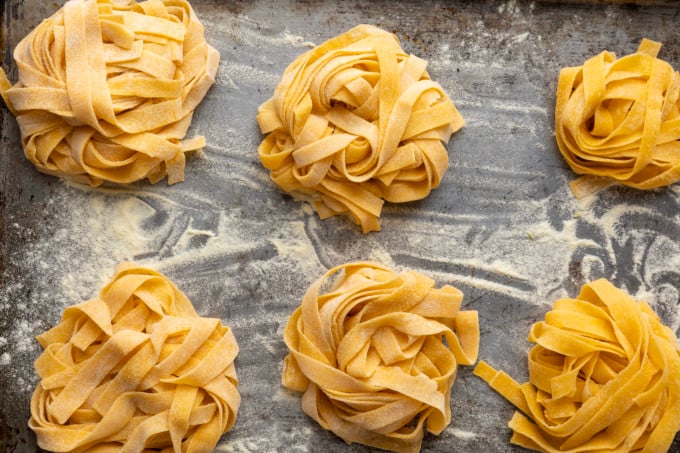
Fresh Pasta Dough Recipe
A pasta dough recipe itself is a study in simplicity with just three ingredients: all purpose flour, semolina flour, and eggs. That’s right; there is no oil or salt in this very traditional recipe.
Unsalted food is admittedly boring food, but this pasta is anything but boring and salt free once it’s cooked. The water you use to cook the pasta should be generously salted; about as salty as the sea. That does the trick beautifully!
This is an old school recipe and it’s been around for a long time because it is utterly perfect. It creates beautifully al dente or toothsome pasta that can be made in a multitude of shapes and served with many sauces.
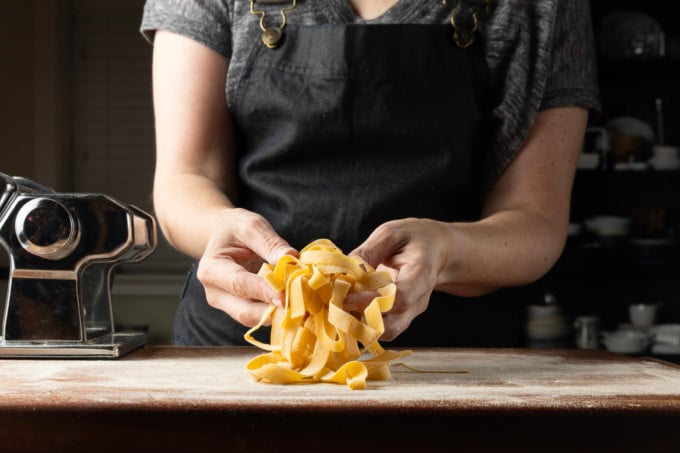
Pasta Recipe Recipe
I remember being intimidated before making pasta the first time many years ago. I needn’t have worried. It is one of the easiest, most intuitive foundational recipe that exists.
You have two choices: you can go “Italian Grandma” or you can be “Thoroughly Modern Millie”. For the “Italian Grandma” approach, you’ll pile your flour up on a clean counter or large cutting board and create a well in the center to pour your eggs into.
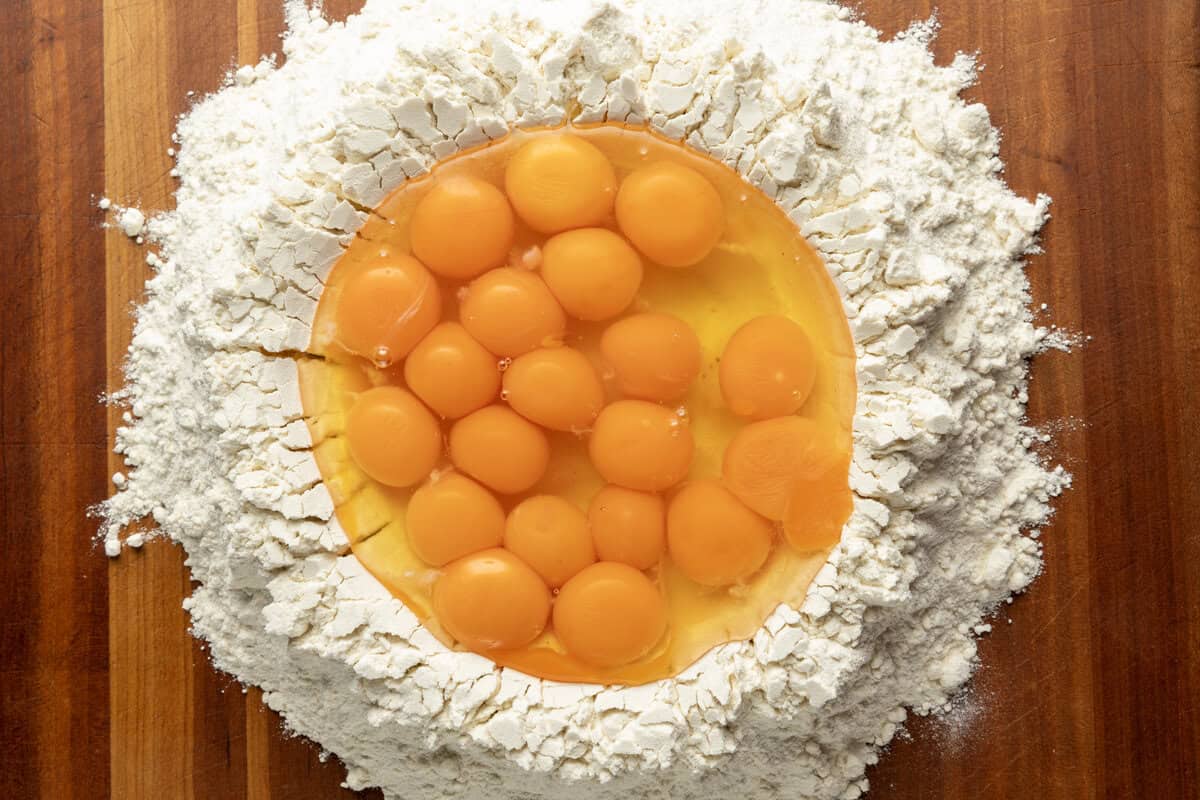
Then you’ll use a fork to break up the eggs and begin incorporating the flour from the inside of the well. Shift to your hands and work it all together until it forms a smooth dough. Wrap it, rest it, then roll it and cut it!
If you’re feeling more of a “Thoroughly Modern Millie” or don’t trust your ability to contain a bunch of liquid eggs on a counter (and believe me, nobody is judging!), you can do this in a stand mixer fitted with a dough hook.

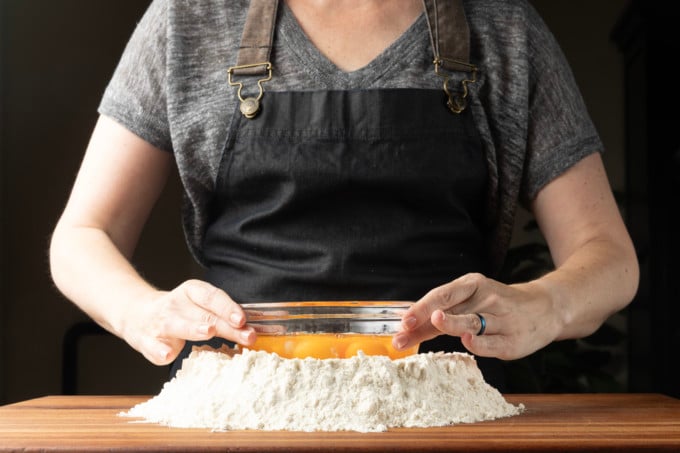

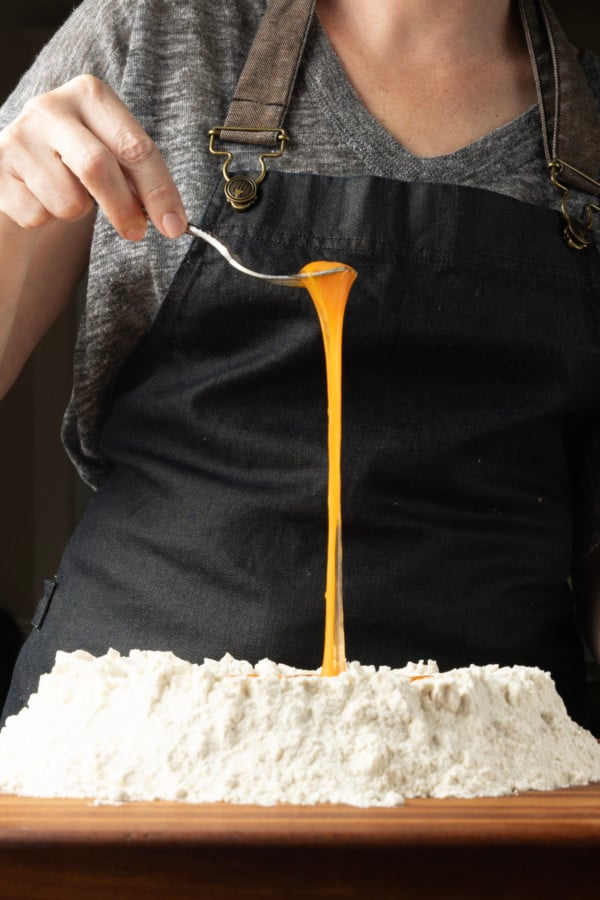
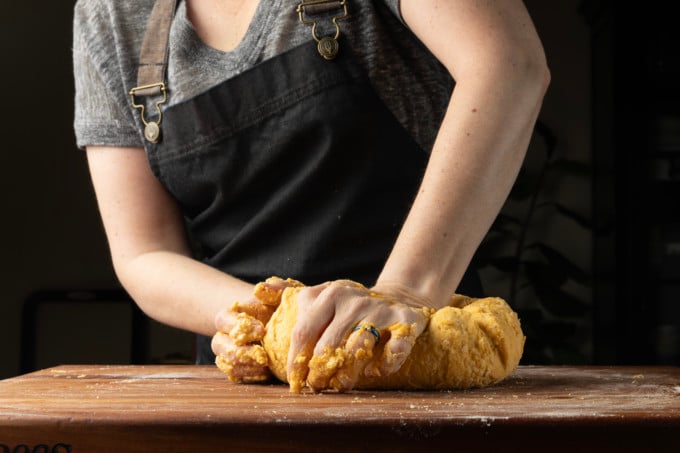
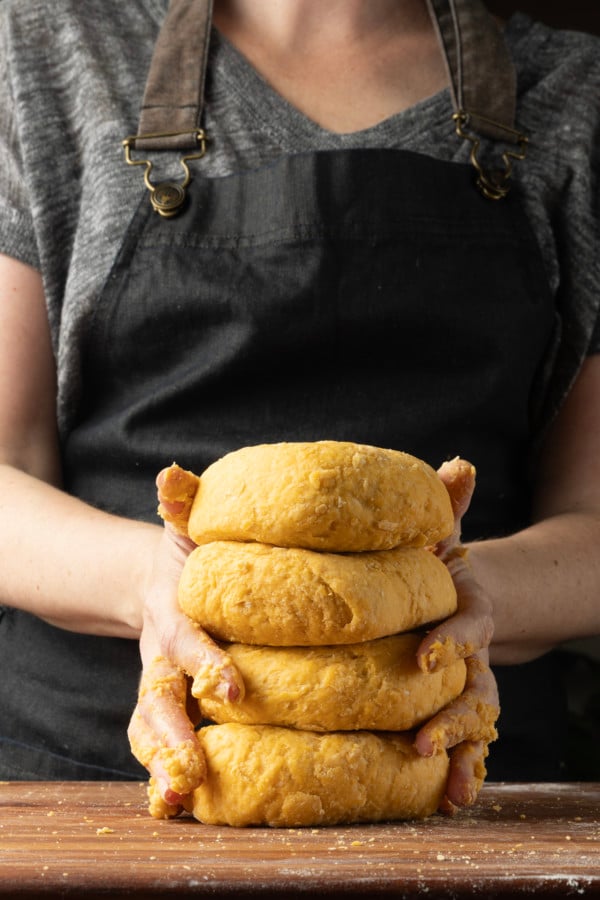
Homemade Pasta No Machine
Whether you use a stand mixer attachment or the hand-crank variety of pasta machine, you’ll get a uniform thickness. That is the great advantage of pasta rollers.
While I love using my old-fashioned pasta rolling machine, you can very definitely make homemade pasta with no machine.
There are quite a few hand-made pasta shapes that don’t require that, though! Pici is probably the easiest. You simply cut off a 1-inch knob of your fresh pasta dough recipe.
Roll it out until you have an approximately 2-foot long cord that’s tapered at the ends. Transfer it onto a semolina dusted sheet pan. Repeat until you’ve rolled out all of the dough, keeping the rolled pasta in a single layer. Ta da!
Other easy hand shaped pastas include papparedelle, orecchiette, and cavatelli.
Tagliatelle will require you to roll out the dough to as close to a uniform thickness as you can with a rolling pin. You can cheat a little and use rolling pin spacers to insure a uniform thickness.
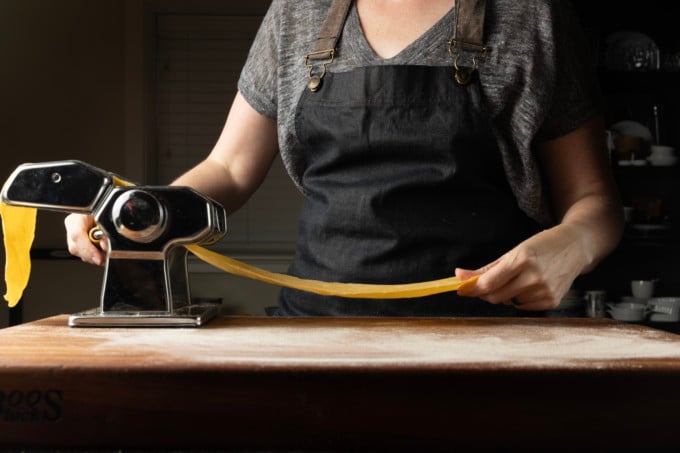
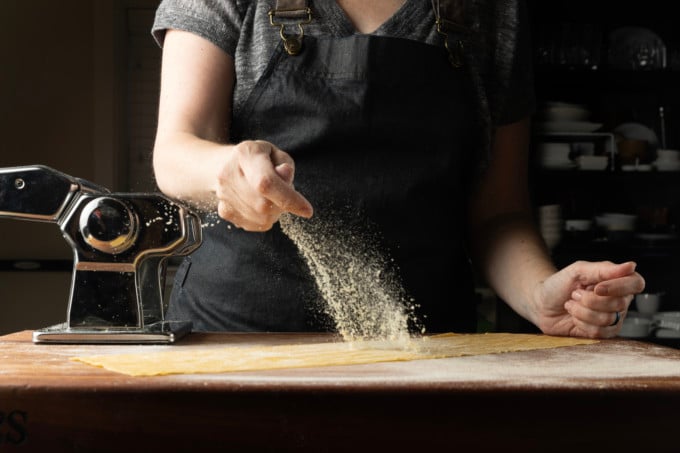
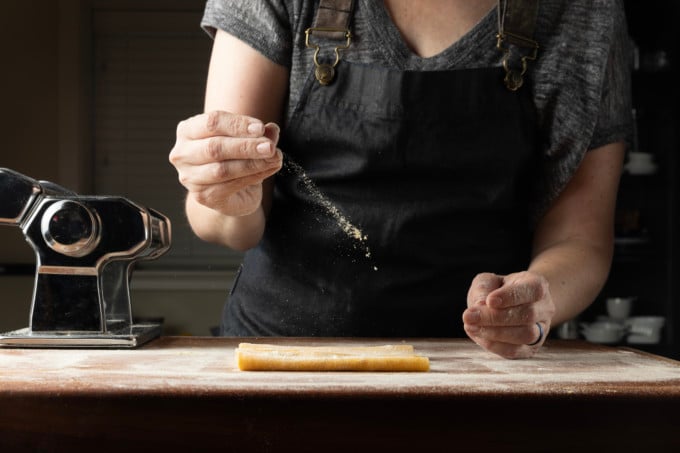
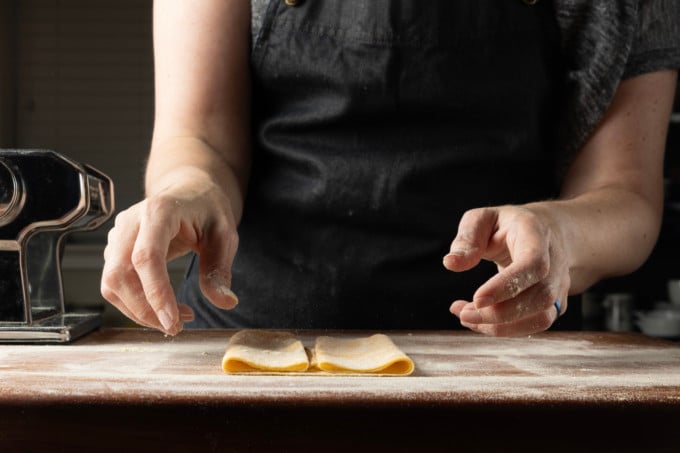
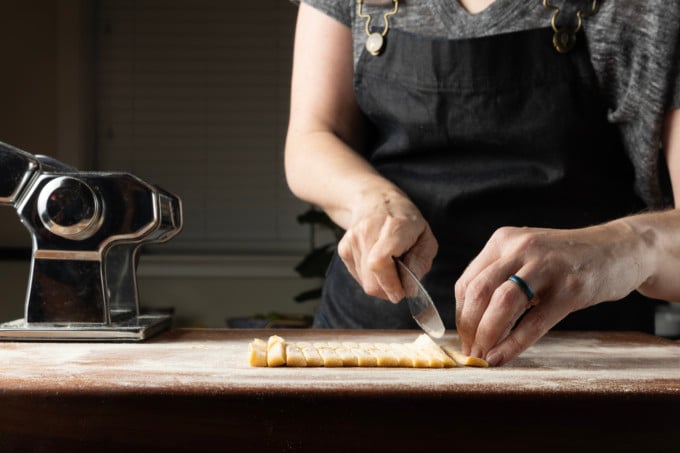
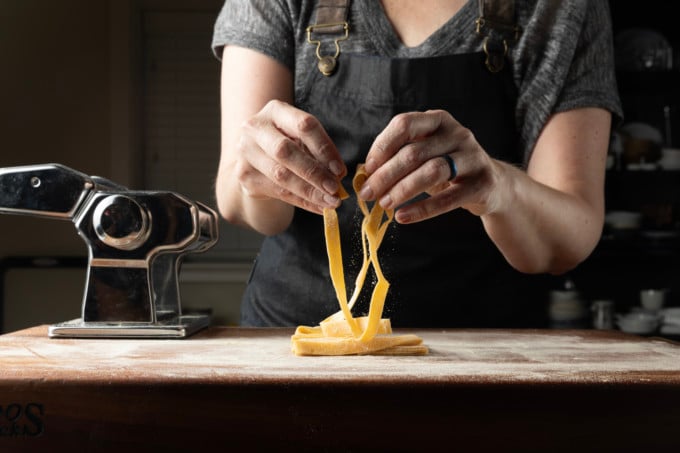
How to Store Homemade Pasta
You can store homemade pasta in the refrigerator for up to 24 hours prior to cooking it, or move it to the freezer for longer storage. Either way, you’ll want to follow a couple of guidelines to make sure your pasta stays in optimal condition.
Whether keeping it in the fridge or freezer, you’ll want to generously dust the pasta with flour. I use rice flour for this because it keeps the pasta from sticking to itself or anything else.
All-purpose flour tends to absorb the water in the air and become gummy. Gumminess is the enemy of pasta.
If I’m refrigerating my pasta, I dust the pan with rice flour, create little nests of the pasta, dust those again with rice flour, then cover with a clean dish towel or plastic wrap and move it to the fridge.
If I make a massive batch of pasta and want to save some for future meals, I do the same thing that I would to store it in the fridge, but slide the pan into the freezer. Once the pasta has frozen solid -it usually takes 2 or so hours-, I gently shift the nests of pasta into a zipper top bag or vacuum sealed bag and get as much air out of them as possible.
I then label the bags with the date and type of pasta I made, and store it in the freezer for up to 3 months. I don’t mind telling you I feel like a genius when I pull pasta I made out of the freezer for a quick dinner.
Fresh Pasta Recipes
You can use fresh pasta just about anywhere you’d ordinarily use dried pasta. All you need to do is adjust cook times to accommodate the quicker cooking fresh pasta.
We have quite a few favourite pasta dishes around the FWF household. Nothing, but nothing beats homemade spaghetti sauce and this crockpot spaghetti sauce recipe makes it so easy you can have it any night of the week. You’ll be blown away by how amazing this smells as it slowly simmers away!
And if you’re making a big old pot of spaghetti sauce to go with homemade pasta, you’ll want to make these meatballs that are so succulent and savoury with a texture so perfect, you’ll judge all other meatballs by them! They happen to be gluten-free, but don’t hold that against them.
Creamy Spinach Sausage Pasta is a hearty, crave-worthy, simple pasta dish that pulls together in mere minutes. Add a salad, and you’ll have a memorable dinner on the table in about 30 minutes. It has fast become a go-to, cool-weather dish in our home, and I’m sure it will in yours, too!
This delightful Asian Pasta Salad is seriously heavy on the crunchy vegetables with a flavourful garlic and ginger soy vinaigrette. Serve by itself as a great light summer meal or with any number of grilled meats or fish!
This copycat Wegman’s lasagna soup recipe is for when you’re craving lasagna but don’t want the prep work involved with assembling a whole lasagna. Rich with Italian herbs and seasonings, with a generous amount of cheese, this soup has a definite authentic lasagna taste!
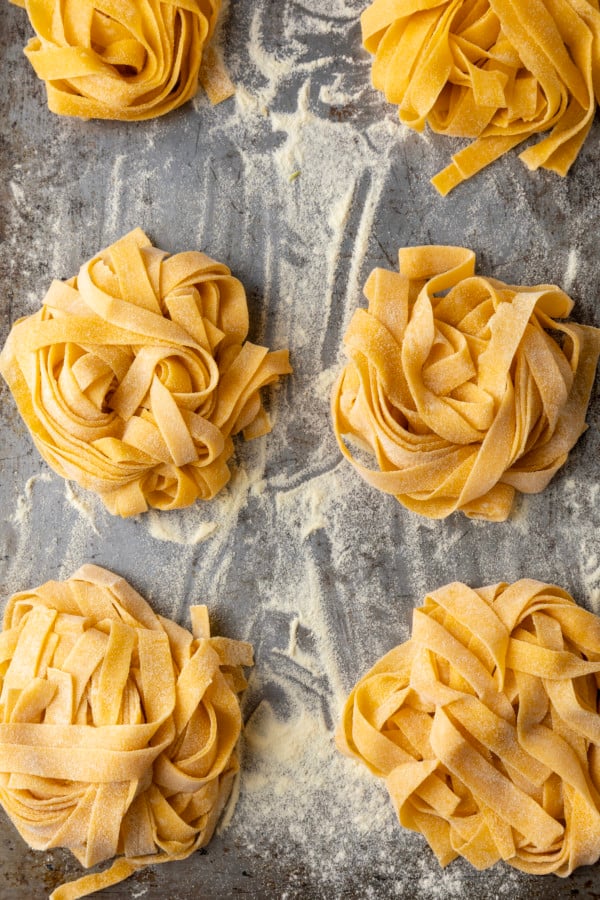
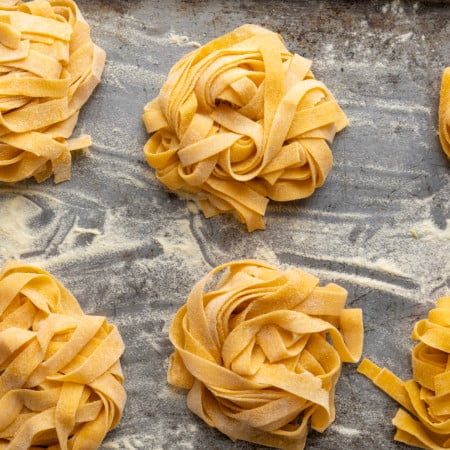
Fresh Pasta Dough Recipe
Rate RecipeEquipment
- 1 pasta roller or rolling pin
- kitchen scale or measuring cups
- fork
Ingredients
- 7.65 ounces semolina flour 1 1/3 cups by volume
- 5.65 ounces all-purpose flour 1 1/3 cups by volume
- 4 eggs
Instructions
- Pile the flour into a mound on a clean counter or cutting board. Crack the eggs into a bowl, use the bowl to create a well in the center of your mound of flour.
- Use a fork to gently break up the yolks of the eggs. Continue using the fork to start incorporating flour from the inside edge of the well of flour to the eggs.
- Once you are getting close to the walls of your flour mound being gone, switch to using your hand to bring the dough together. Knead until you get a smooth dough.
- Form the dough into a ball then flatten slightly, and wrap tightly with plastic wrap. Set this aside and let it rest for 30 minutes.
To Roll the Pasta with a Machine:
- Clamp your pasta machine firmly to a sturdy surface. Dust it and the work surface generously with semolina flour.
- Divide the pasta dough into 4 roughly equal sized pieces. Roll these into balls and cover with a clean towel. Working with one piece of pasta at a time, roll the pasta through the widest setting on your machine (setting 1).If at any point you feel it is becoming sticky, please dust with more flour.
- Fold the two ends of the pasta toward the center, having them meet, then fold that in half like a book. Feed this back through the pasta machine again, still on the widest setting. Repeat this process about three times, dusting with additional flour if it gets sticky, or until your pasta is very smooth.
- Take the prepared piece of dough and begin rolling it through your machine again. You'll put it through the machine at progressively thinner settings 2 times each. For example, you'd put it through the roller twice at Setting 2, twice at Setting 3, twice at Setting 4, etc… until you reach about 1mm thickness.
For Lasagna Sheets:
- Cut the sheets into roughly equal rectangular pieces.
- Gently pass the lasagna sheets through boiling salted water for about 1 minute, then dry on towels before using in lasagna.
For Tagliatelle or Papparedelle:
- Either use cutters that come with your pasta machine to cut these OR dust generously with semolina flour, then fold the two ends of your dough toward the middle, having them meet at the center. Dust again, and fold the dough in half like a book. Use a sharp knife to cut into 1 cm thick strips for Papparedelle or about 2/3 of a cm thick for tagliatelle.
To Form Pici Without a Machine
- Cut off a 1-inch knob of your fresh pasta dough recipe. Roll it out until you have an approximately 2-foot long cord that's tapered at the ends. Transfer it onto a semolina dusted sheet pan. Repeat until you've rolled out all of the dough, keeping the rolled pasta in a single layer.
To Cook Fresh Pasta
- Bring a large pot of water to a boil. You want a minimum of one gallon of water.When the water reaches a full, rolling boil, salt it generously. Use 1-2 tablespoons per 4 quarts of water.The time it takes to boil fresh pasta depends on the thickness and length of the pasta shape. Longer, thin or flat pasta will take about 2 minutes for al dente pasta. Thicker, stubby, or chunky fresh pasta will take about 3 to 5 minutes. Just keep testing pieces to find the sweet spot!If cooking homemade pasta that you've stored in the freezer DO NOT THAW first. Simply drop it straight from the freezer into the boiling water and add about 1 minute to the cooking time.
Nutrition
Nutritional information is an estimate and provided to you as a courtesy. You should calculate the nutritional information with the actual ingredients used in your recipe using your preferred nutrition calculator.
did you make this recipe?
Make sure to tag @foodiewithfam on Instagram and #hashtag it #foodiewithfamily so I can check it out!
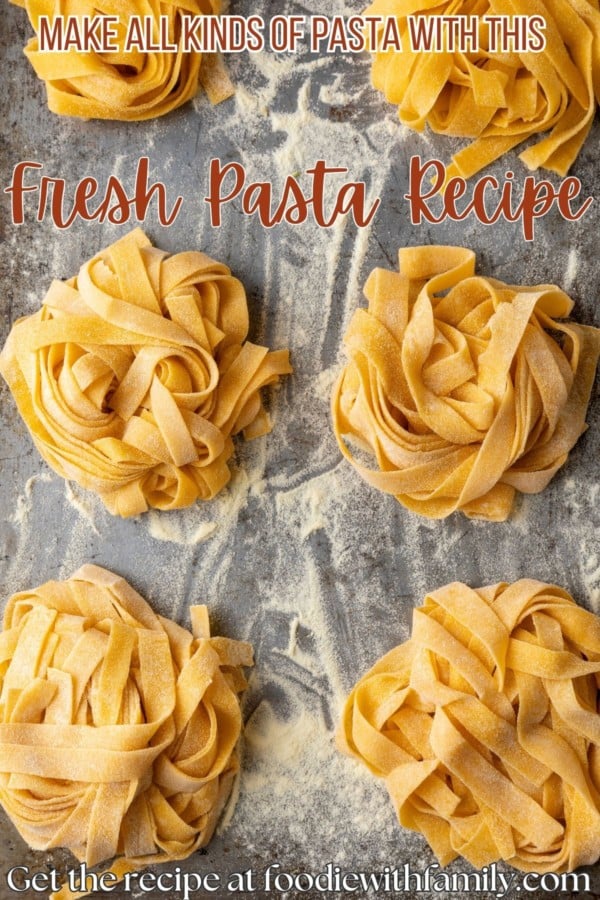
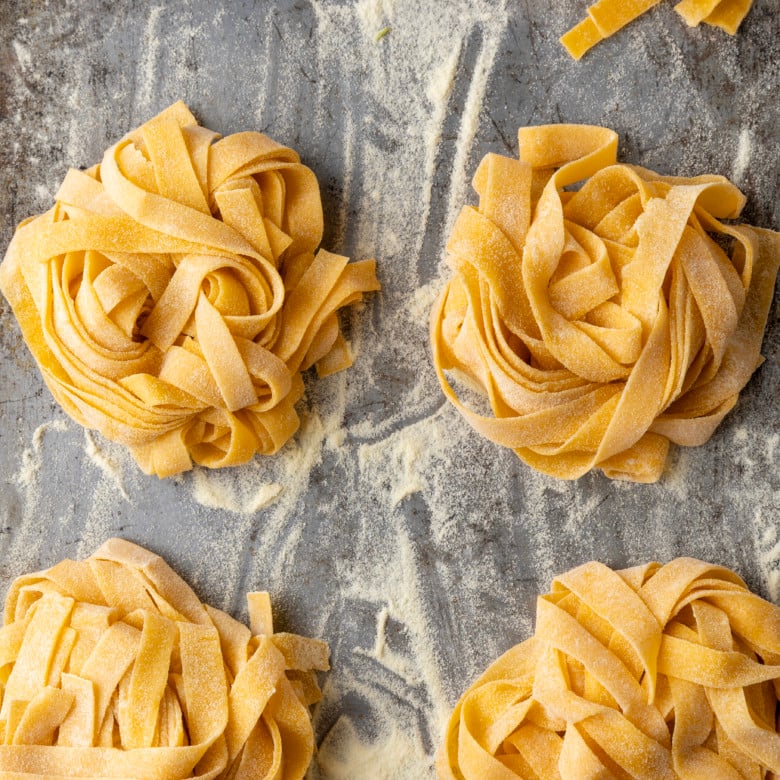
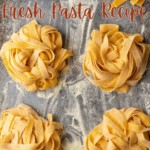
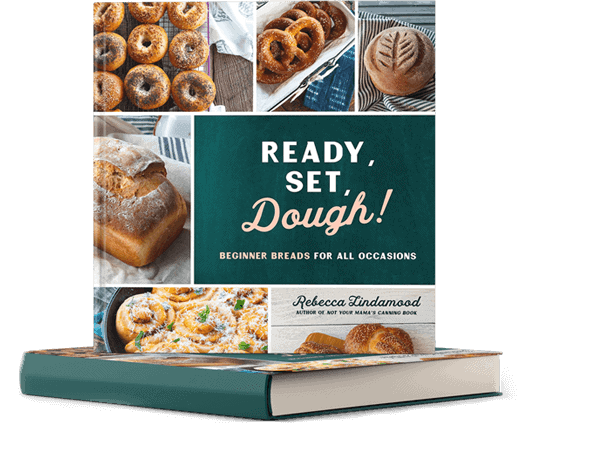

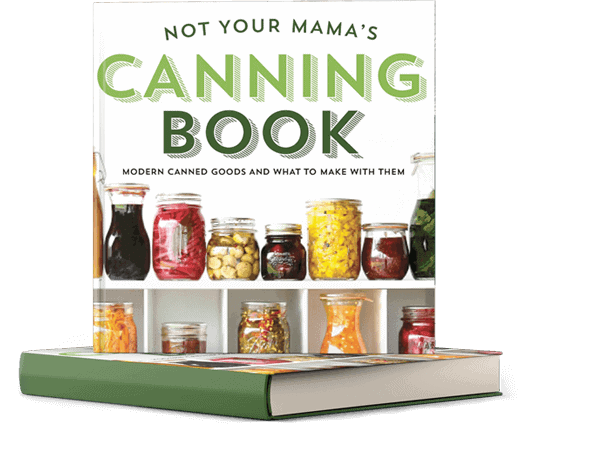
Comments + Reviews